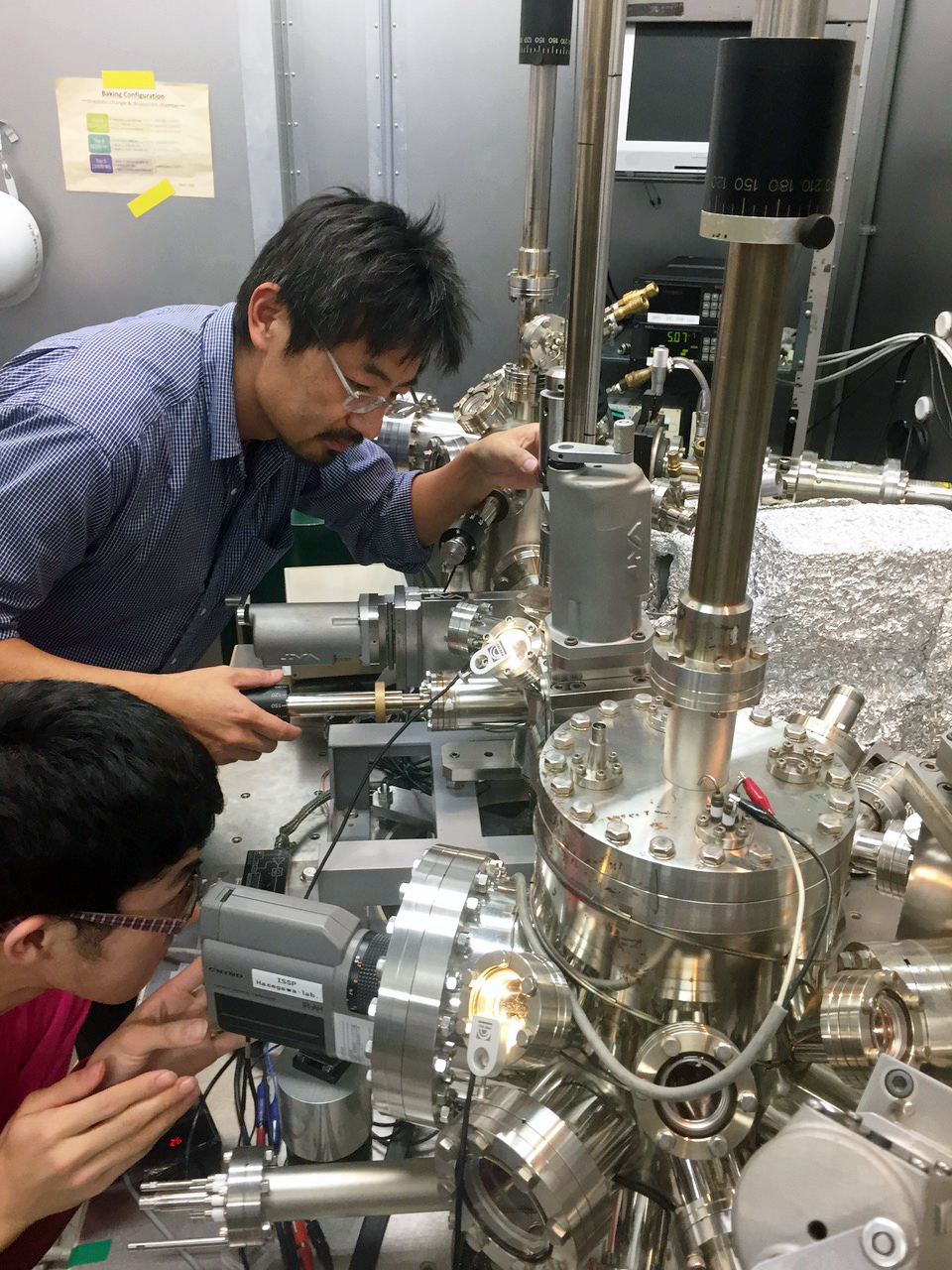ISSP Stay Report of Prof. Susumu TAKAHASHI
Susumu TAKAHASHI
Department of Chemistry/Department of Physics & Astronomy,
University of Southern California

Among many analytical techniques, magnetic resonance including electron spin resonance (ESR) spectroscopy interrogates unpaired electron spins in solids and liquids to reveal local structure and dynamics; for example, ESR has elucidated parts of the structure of protein complexes that have resisted all other techniques in structural biology. ESR can also probe the origin of decoherence in condensed matter, which is of fundamental importance to the development of quantum information processors. However, its intrinsically low sensitivity precludes ESR analyses of samples with very small volumes. For example, with a current typical spectrometer setup, >1010 electron spins are required to obtain ESR signals at room temperature.
I stayed at ISSP from September to December 2018. During my stay, I worked on development of ESR spectroscopy using a scanning tunneling microscopy (STM) technique in collaboration with Prof. Hasegawa research group. In particular, the project aimed to demonstrate observation of ESR signals by detecting changes in the tunneling current due to changes of the spin polarization of the sample. This STM-based ESR (STM-ESR) technique will increase the ESR sensitivity drastically by enabling detection of ESR from a spin in a single atom. STM also provides atomic-scale positioning of the target atoms. Thus, the STM-ESR technique will provide a unique platform with unprecedented spectral resolution, sensitivity and versatility for fundamentals and applications in quantum and solid-state physics. On the other hand, there are many challenges to achieve the demonstration including search of a stable spin system which provides a high contrast in the spin-dependent tunneling current and long spin relaxation times, and development of a STM system with microwave excitation effectively coupling to a target spin system.
Because of a limited period of my stay, our investigation focused on a proof-of-principle STM-ESR experiment with Cobalt (Co) nanostructure on the Copper (Cu) surface. Co nanostructure on the Cu surface has been known to exhibit ferromagnetism and often used for spintronics research. The ferromagnetism has also been observed by the spin-polarized STM (SP-STM). In the experiment, Co nanoislands were created by deposition of Co atoms on the (111)-cut Cu surface and then SP-STM was performed to probe successful creation of ferromagnetic Co nanoislands. Finally, we applied microwave excitation for STM-ESR, however we found that improvement of microwave circuits in the STM system was required for demonstration of STM-ESR and decided to upgrade the microwave system before performing further experiment.
In summary, my stay was extremely productive and enjoyable because of daily interactions with group members in the Hasegawa laboratory and other members at ISSP. In particular, I would like to thank Prof. Hasegawa for being a host of my visit and many fruitful discussions about the STM-ESR project and many others. The lab trip to a hot spring hotel in Tsuruoka, Yamagata prefecture was unforgettable by relaxing in the hot spring and refreshing with trail walk in an autumn mountain. I would also like to thank Dr. Hung-Hsiang Yang and Dr. Kanta Asakawa for performing the STM-ESR experiments and productive discussion about the experiment and the design of the STM system. I also enjoyed discussion about various topics in STM science with Masayuki Hamada, Fumikazu Oguro and Yudai Sato in the Hasegawa laboratory. Furthermore, I would like to thank Prof. Jun Yoshinobu, Prof. Yohei Kobayashi and Dr. Shuntaro Tani for the collaborations on my diamond project. In my spare time, I joined social activities at ISSP. In particular, I enjoyed the I♥cafe by meeting and chatting with members at ISSP. Moreover, I had a great time by joining the ISSP lunch-time soccer regularly and by winning the annual soccer competition at the Kashiwa campus as a member of the ISSP soccer team!

